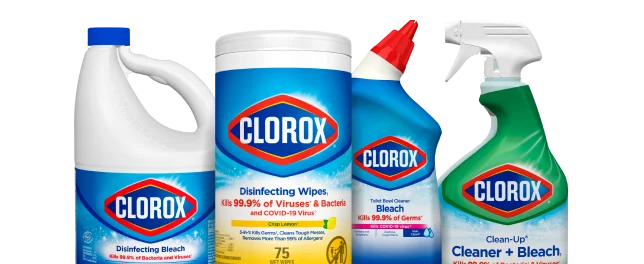Does Bleach Kill Mold? How to Remove Mold on Walls to Ceiling*

Yes! Learn the correct bleach to water ratio to create the perfect bleach solution to remove mold from washable walls and ceilings from the experts at Clorox.
Removing mold from ceilings and walls
No one likes a mold problem, but Clorox has several ways to take care of it. Clorox® Disinfecting Bleach — the same bleach you use to clean your toilet and tub — can be made into an economical solution and applied directly to the area. Or if you don’t want to make your own solution, opt for our ready-to-use sprays like Tilex® Mold & Mildew Remover or Clorox® Clean-Up®. They have the same sodium hypochlorite active ingredient as Clorox® Disinfecting Bleach, and can be sprayed on the mold or mildew and then rinsed away after the appropriate contact time. Note, if the mold has a larger surface area than 10 square feet, call a mold remediation professional. Otherwise, see below for instructions on mold/mildew removal using Clorox® Disinfecting Bleach.
What you need

Clorox® Disinfecting Bleach

Measuring cup

Large bucket

Gloves

Sponge

Brush
Steps to remove mold
Prep area
Open windows and ventilate the area where you are working to circulate fresh air.

Pre-clean surface
If mildew is heavy, pre-clean by wiping away as much as you can before bleaching.

Mix bleach solution
Using your measuring cup and bucket, measure ⅓ cup Clorox® Disinfecting Bleach per gallon of water (1500 ppm available chlorine solution).

Apply solution
Wearing gloves, apply the solution to the affected area with a sponge or brush.
TipUse a spray bottle for more convenience.

Wait 10 minutes
Allow it to sit in contact with the mildew for 10 minutes. If needed, reapply the bleach and water solution to keep the surface wet.

Rinse
Rinse the affected area with clean water.

Air dry
Allow to air dry. You may use a fan for quicker drying time.
TipIf you used a spray bottle, be sure to rinse it out.

When using a spray bottle to apply the disinfecting solution, clean the bottle immediately when finished. Pour unused contents of the bottle down the sink, then rinse the bottle and sprayer mechanism with clean water. Find more information on mixing up bleach and water solutions in a spray bottle here.
Also open some windows and ventilate the area where you are working as this will promote drying and evacuate any bothersome fumes.
Wear protective gloves and clothing you don’t mind accidentally splashing with bleach solution.
Frequently Asked Questions
- Can I use a stronger solution?
It’s tempting to use a stronger solution, but bleach and water solutions should always be mixed as directed on the label to ensure that they can be safely applied to bleach-safe surfaces. More concentrated solutions may not be safe for some surfaces, and never use bleach full strength on any surface.
- Can I leave the solution on longer?
Following the recommended contact time for a bleach and water solution and not leaving it on longer than recommended is important to make sure the surface is cleaned safely without any damage. Always mix, apply and rinse bleach and water solutions as directed on the label to ensure safe use of the product.
- What surfaces can I use the bleach and water solution on?
Hard, nonporous surfaces including glazed ceramic tile, porcelain, glass, stainless steel, plastic laminate, sealed granite, vinyl and silicone are all surfaces you can use a bleach and water solution to treat mold and mildew when used as directed. Do not use on marble, non-stainless steel, aluminum, chipped porcelain and porous tile. If unsure, test an inconspicuous area first for surface compatibility.
- I also have a soap scum problem. Which should I treat first?
If you have soap scum and mold or mildew, treat the soap scum problem first with Clorox® Disinfecting Bathroom Cleaner. You must rinse away the bathroom cleaner completely with water before using the bleach and water solution to treat mold and mildew.



